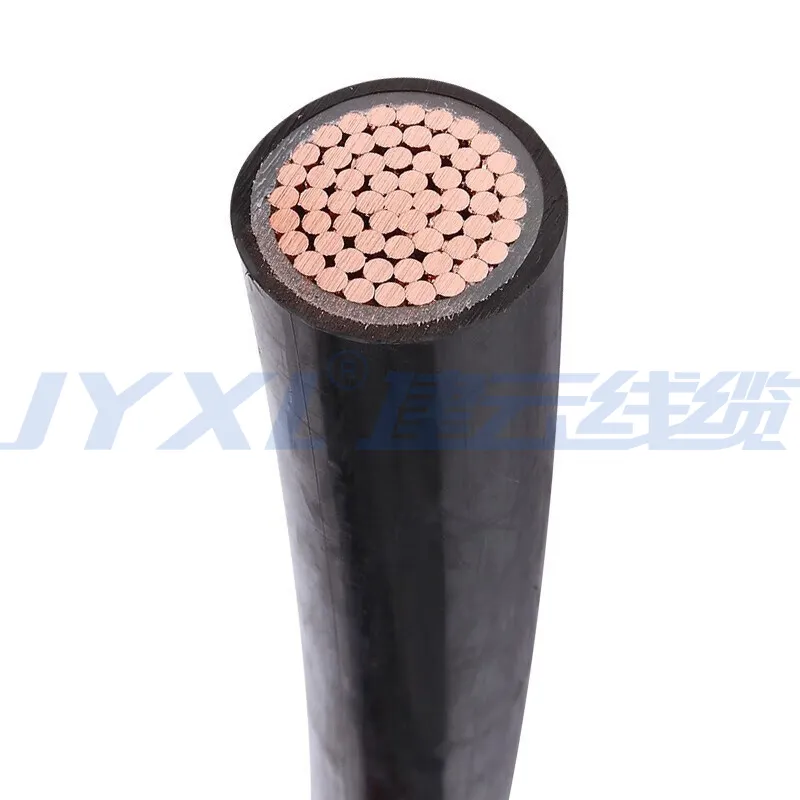Understanding Low Voltage Cables: Types and Applications
Time: 2025-05-01 03:31:50
Source: Henan Province Jianyun Cable Co., Ltd.
Low voltage cables are essential components of modern electrical and communication systems, designed to transmit power or data at voltages typically below 1000 volts AC or 1500 volts DC. These cables are widely used in residential, commercial, and industrial settings due to their safety, efficiency, and versatility. This article explores the common types of low voltage cables, their applications, and why they are critical in today’s technology-driven world.

What Are Low Voltage Cables?
Low voltage cables, often referred to as structured cabling or network wiring, operate at voltages below 50 volts in many applications, though they can handle up to 1000 volts AC or 1500 volts DC. Unlike high voltage cables used for power transmission, low voltage cables are designed for low-energy systems, such as data communication, telecommunications, security, and lighting. They are typically insulated with materials like polyvinyl chloride (PVC), cross-linked polyethylene (XLPE), or linear low-density polyethylene (LLDPE) to ensure safety and durability.
Common Types of Low Voltage Cables
Low voltage cables come in various forms, each tailored to specific applications. Below are some of the most widely used types:
-
Twisted Pair Cables (e.g., Cat5e, Cat6, Cat6a): These cables consist of pairs of insulated wires twisted together to reduce electromagnetic interference (EMI). Cat5e supports speeds up to 1 Gbps, while Cat6 and Cat6a handle up to 10 Gbps, making them ideal for Ethernet networks, VoIP phones, and IP cameras. They are the backbone of most LAN systems.
-
Coaxial Cables (e.g., RG-6, RG-59): Featuring a central conductor surrounded by a shield, coaxial cables are used for video transmission, such as cable TV, satellite, and CCTV systems. RG-6 is commonly used for high-definition signals due to its low signal loss.
-
Fiber Optic Cables: These cables transmit data as light signals through glass or plastic strands, offering high-speed, long-distance communication with minimal interference. They are used in high-speed internet, telecommunications, and data centers.
-
Power over Ethernet (PoE) Cables: PoE cables, typically Cat5e or Cat6, deliver both data and power to devices like IP cameras, VoIP phones, and Wi-Fi access points, operating at around 48 volts.
-
Control Cables (e.g., CY, SY, YY): Used in automation and control systems, these cables transmit low-voltage signals to machinery and equipment, ensuring precise control in industrial settings.
-
Instrumentation Cables: Designed for accurate signal transmission, these cables are used in monitoring and measurement systems, such as in industrial plants or laboratories.
-
Speaker Cables: These cables connect audio equipment, such as speakers to amplifiers, in home theater or commercial audio systems.
-
Security and Alarm Cables: Used in surveillance cameras, motion sensors, and alarm systems, these cables ensure reliable signal transmission for security applications.
-
Low Voltage Power Cables: Common in landscape lighting (12V or 24V) and doorbell systems, these cables deliver power to low-energy devices.
-
Thermostat Cables: Multi-conductor cables used to connect thermostats to HVAC systems for precise temperature control.
Applications of Low Voltage Cables
Low voltage cables support a wide range of applications, making them indispensable in modern infrastructure. Key uses include:
-
Telecommunications: Twisted pair and fiber optic cables enable internet, telephone, and VoIP services.
-
Networking: Cat5e, Cat6, and fiber optic cables form the backbone of LANs, data centers, and Wi-Fi networks.
-
Security Systems: Low voltage cables connect surveillance cameras, access control systems, and alarms.
-
Audio-Visual Systems: Coaxial, speaker, and HDMI cables support home theaters, conference rooms, and public address systems.
-
Automation and Control: Control and instrumentation cables facilitate smart homes, industrial automation, and building management systems.
-
Low Voltage Lighting: Used in landscape lighting and LED systems for energy-efficient illumination.
Benefits of Low Voltage Cables
Low voltage cables offer several advantages, including:
-
Safety: Operating at low voltages reduces the risk of electric shock and fire hazards.
-
Energy Efficiency: These cables consume less power, lowering energy costs.
-
Flexibility: Smaller and more flexible than high voltage cables, they are easier to install in tight spaces.
-
Reliability: Designed to minimize signal interference, they ensure consistent data and power transmission.
-
Scalability: Structured cabling systems allow easy upgrades to meet future needs.
Installation Considerations
Proper installation is critical to maximize the performance and longevity of low voltage cables. Key considerations include:
-
Compliance with Standards: Follow industry standards like ANSI/TIA-568 for structured cabling to ensure compatibility and quality.
-
Cable Management: Use conduits, raceways, or cable trays to protect cables and maintain organization.
-
Avoiding Interference: Keep low voltage cables away from high voltage wiring and EMI sources like HVAC systems.
-
Professional Installation: Licensed technicians ensure safe and reliable setups, especially for complex networks.
-
Testing: Post-installation testing for signal strength and bandwidth ensures optimal performance.
Conclusion
Low voltage cables are the unsung heroes of modern connectivity, powering everything from internet networks to security systems and smart homes. By understanding the types, applications, and benefits of these cables, businesses and homeowners can make informed decisions to build efficient, safe, and scalable infrastructure. As technology continues to evolve, low voltage cables will remain a cornerstone of digital and electrical systems, ensuring seamless communication and power distribution.
